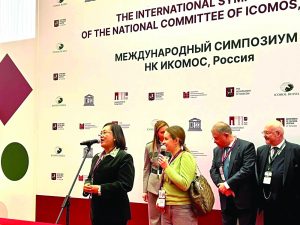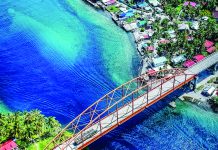Island once home to over 6,000 Russians

TACLOBAN CITY– An ‘open-air museum’ is being planned to be constructed in Guiuan, Eastern Samar, giving homage and preserving the historical and cultural ties between the Philippines and Russia.
This was disclosed by town Mayor Annaliza Gonzales-Kwan who said that the planned shrine would be constructed on Tubabao Island where about 6,000 Russians took shelter between the periods of 1949 to 1951 as they fled from China when the communists took control of much of the said country led by Mao Zedong.
Among those who arrived at Tubabao Island was St. John Maximovitch or St. John of Shanghai. The group included highly skilled Russians who built their own city on the island complete with a plaza, market, and school.
“We plan to build an open-air museum where we can feature the story of the Russians using physical reconstruction and heritage interpretation using data from the research,” the Guiuan mayor said in her speech during the 7th Session of the International Cultural Historical Council held last November 27 to December,2023 held in Moscow.
The visit of Gonzales-Kwan was extended by the Minister of the Government of Moscow.
In a Viber message, she said that she could not say yet as to when the planned museum would be erected and if the Moscow government would help in providing the needed funding.
But this early, Gonzales-Kwan said that if this would be realized, not only the museum would cement the ‘cultural and historical ties’ of Guiuan, in particular, and Russia but could also help attract tourists, and even investments.
“This will help promote the relationship between the Philippines and Russia as this will highlight the kindness of the Filipino people that we were still rebuilding after the war yet we accepted 6,5000(Russians),” she said.
(And of course), this will also help promote the (the two countries) heritage and the development of Guiuan,” Gonzales-Kwan said.
And on a personal note, the town mayor also disclosed that her ballet teacher was a student of a Russian ballerina who was among those who arrived on the island.
Gonzales-Kwan said that when Super Typhoon ‘Yolanda’ (international name: Haiyan), pummeled her town 10 years ago, one of those destroyed was the ‘tangible evidence’ found on Tubabao Island on the occupation of Russians on the island.
“(But) we were able to reconstruct that forgotten history by using memories and archival documentations. We conducted oral history of former Russian residents on the island and did archival research abroad,” she said.
Incidentally, among those who extended assistance to the people of Guiuan were ordinary Russians whose ancestors could have been among those who took shelter on Tubabao Island.
The town of Guiuan, located at the southernmost tip of Samar Island facing the Pacific, has played several historical events.
For one, it was in this town, particularly Homonhon Island, where the Philippines was rediscovered by Ferdinand Magellan back in 1521.
And during World War II, the Americans built one of the massive naval and air bases in the Far East which helped in the liberation campaign of the country and end of the war in the Far East.
(JOEY A. GABIETA)



